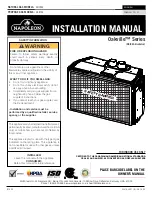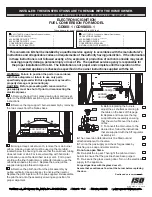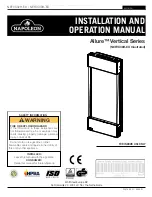
b.21
Battery Cleaning
Batteries, cabinets, racks, and modules should be cleaned with clean
water. If neutralizing is required use a mixture of 1 lb baking soda to
1 gallon of water or East Penn Mfg. supplied battery cleaner (part #
00321). Use clean water to remove baking soda residue
Never use solvents to clean the battery.
Capacity Testing
Per IEEE 1188 “Capacity testing is used to trend battery aging.
The results of a capacity test is a calculation of the capacity of
the battery. The calculated capacity is also used to determine if
the battery requires replacement.”
When performing capacity testing and recording data refer to
IEEE 1188 recommendations.
NOTE: When discharging at higher rates than originally specified,
extra connectors may need to be added to prevent excessive
voltage drop and / or excessive temperature rise.
Should it be determined that any individual cell(s) need to be
replaced, contact East Penn.
CELL REMOVAL PROCEDURE
1. Before removing cell, review Safety Precautions (pg b.3)
of this manual. Contact East Penn with specific questions
or concerns.
2. Disconnect Charger and the system ground connection.
3. Remove connectors from cell being removed.
4. Remove cell retainer bar(s) from cell being removed.
c. Unscrew valve ¼ turn using 17mm hex key (pressure
will release).
d. Tighten valve immediately and torque to 12-14 in lb with
17mm hex key.
5. Cells develop internal pressure. Relieving this pressure from
the cell will make it easier to remove the cell from the module.
a. Pry off vent shroud using insulated flat head screwdriver.
b. Remove flame arrestor (round white disc).
6. Lifting device shall be rated to handle weight of cell.
7. Remove one cell at a time.
a. Thread non-metallic rope through two battery
terminals and knot.












































